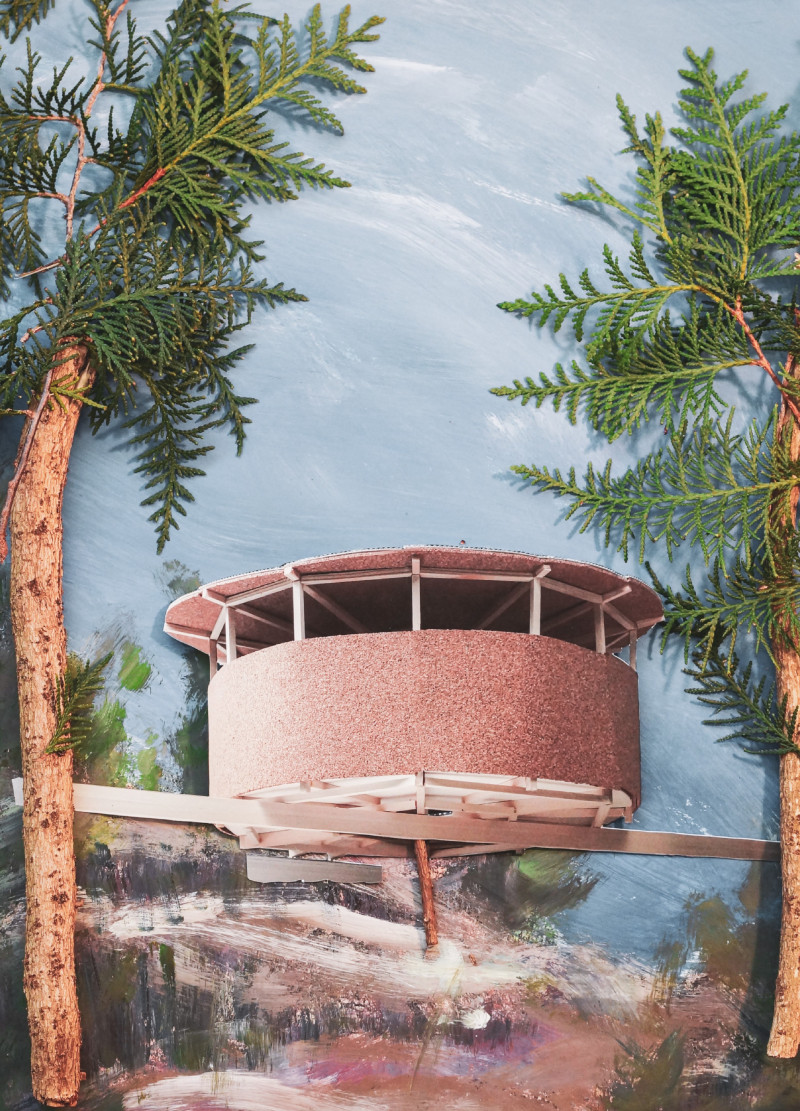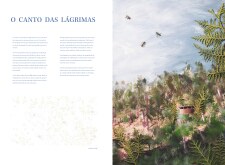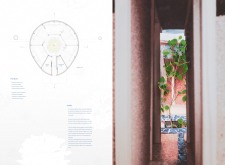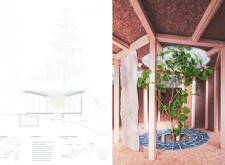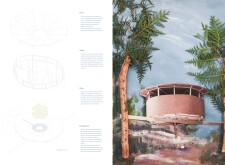5 key facts about this project
O CANTO DAS LÁGRIMAS forms a quiet retreat that highlights the relationship between built space and nature. Located among greenery, the structure provides a space for reflection and connection. The design concept centers on creating a place that works with its surroundings, encouraging both social interaction and personal solitude in a natural setting.
Concept and Spatial Organization
The concept focuses on offering a retreat that promotes a thoughtful engagement with the environment. Spaces are laid out to support both social gatherings and moments of solitude. The design allows occupants to interact with the landscape, making use of sensory elements like the sound of rainwater falling on the structure. This sound enhances the experience of being in nature, adding depth to everyday activities.
Materiality
Materials were selected for their environmental qualities and their ability to blend with the landscape. The walls are made from solid cork, which provides insulation while ensuring a sense of privacy. This choice reflects a dedication to low-impact living and keeps a connection to the outdoors. Terracotta tiles line the impluvium, helping collect water and showcasing local craftsmanship.
Climate Control and Structural Elevation
The roof design features ventilation and insulation that regulate temperature throughout the year. This helps ensure comfort while reducing energy use. The building is elevated above the ground using a wooden beam, which limits disruption to the natural environment and provides clear views of the surroundings. Tree screws anchor the structure, ensuring minimal damage to nearby plants and allowing them to grow without hindrance.
Water Management Systems
Effective water management is a key feature of the design. A mulch basin blends with the landscape to treat greywater, highlighting a focus on environmental care. The inclusion of a composting toilet reinforces the sustainable practices applied throughout. This approach promotes a healthy relationship between the building and the landscape, allowing both to coexist.
Natural light plays a significant role in how the interior feels. Sunlight comes through openings, creating changing patterns on surfaces. This connection to the outside blurs the lines between indoors and outdoors, supporting the idea of harmony with nature.


